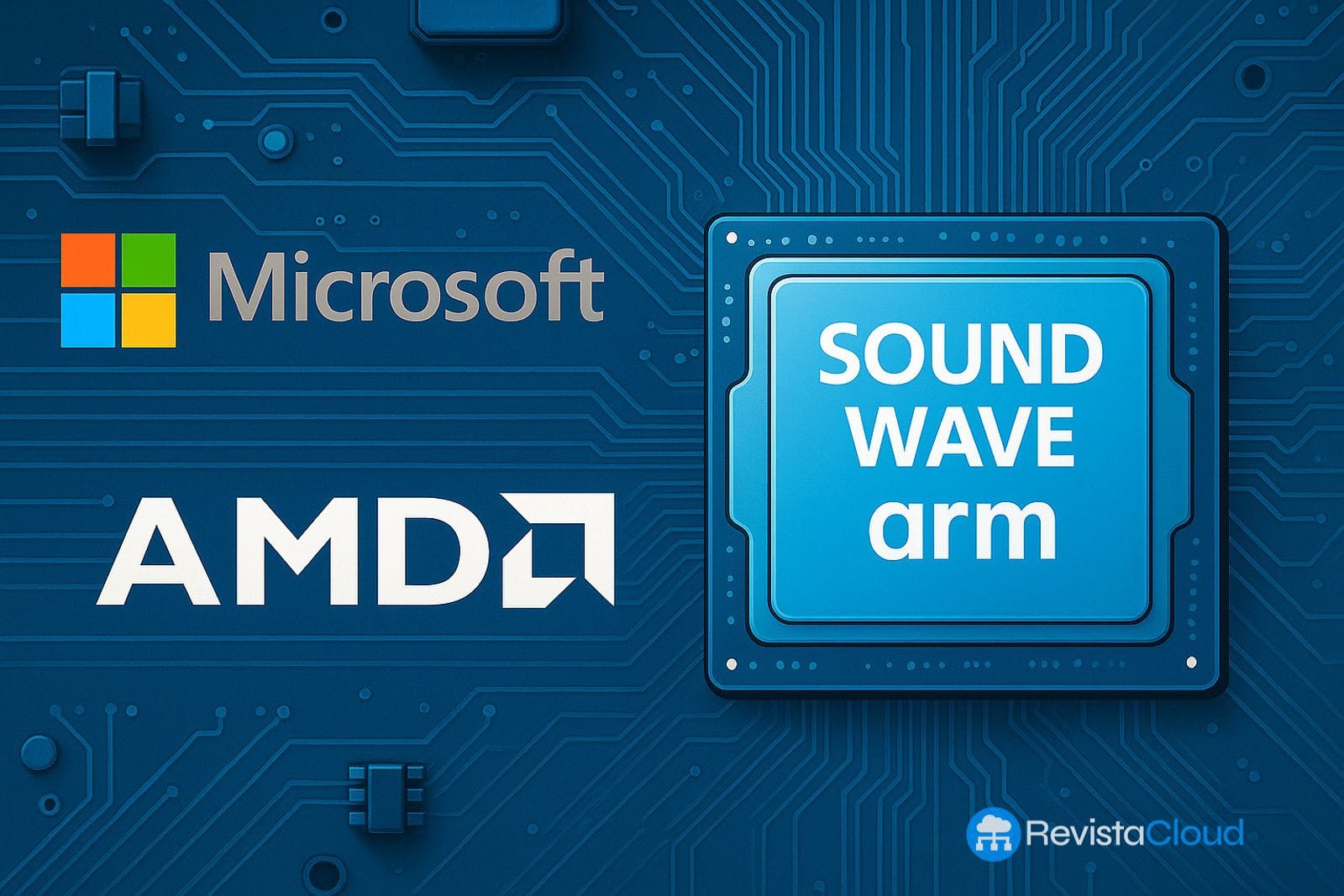The chip, based on Arm architecture and potentially manufactured at 3 nm, would mark AMD’s entry into the Windows on Arm ecosystem with the backing of Microsoft.
A recent leak has unveiled one of the most unexpected projects within the Windows ecosystem: AMD is developing a new SoC based on Arm architecture, codenamed “Sound Wave”, specifically designed to power Microsoft Surface devices in 2026.
The information comes from well-known leaker KeplerL2, who posted on the NeoGAF forum that this chip would represent a direct collaboration with Microsoft for its future Surface line, positioning AMD as a new player in the Arm processor market for PCs, currently dominated by Qualcomm.
From x86 to Arm: a strategic shift for AMD
So far, AMD has firmly remained in the realm of x86 processors, directly competing with Intel in both desktops and laptops. This foray into Arm marks a historic turning point for the company, as it seeks to adapt to the shift toward more efficient, always-connected devices with greater autonomy, features inherent to the Windows on Arm (WoA) platform.
The current Surface range based on Arm primarily uses Qualcomm Snapdragon X chips, although with known limitations in native performance and software compatibility. The arrival of an Arm SoC developed by AMD, leveraging its expertise in high-performance CPU design and integrated GPUs, could significantly enhance real-world application performance and graphical integration in Windows environments.
Manufactured at 3 nm with Zen 6 architecture on the horizon
Although there is still no official confirmation, it is speculated that the “Sound Wave” SoC could be manufactured using a 3-nanometer process, possibly by TSMC, ensuring high energy efficiency and optimized performance for mobile or ultraportable environments.
Additionally, the leaker revealed that AMD’s Zen 6 architecture, the successor to Zen 5, would be introduced a year before the launch of the PlayStation 6, around 2026. This architecture would include significant innovations, such as a greater number of cores and new optimizations for workloads related to artificial intelligence, opening the possibility of technological convergence between its x86 and ARM lines in terms of modular design and shared capabilities.
Microsoft and AMD: a renewed alliance
The collaboration between Microsoft and AMD is not new, but this new phase represents a strategic diversification by Redmond, aiming to not rely exclusively on Qualcomm in its push for Windows on Arm. The “Sound Wave” project can also be seen as a rehearsal for broader adoption of Arm chips in the Windows ecosystem, following trends set by Apple with its M1 and M2 chips.
If confirmed, AMD’s SoC could give a new boost to the Windows on Arm platform, providing a powerful and better-integrated alternative to current graphical and performance standards.
A key 2026 for the processor market
The arrival of the “Sound Wave” chip, the debut of Zen 6, and the upcoming PlayStation 6 position 2026 as a crucial year for the evolution of CPU and GPU architectures across multiple platforms: from mobile devices to consoles and traditional PCs.
This new move by AMD reinforces the market trend toward architecture diversification and energy optimization, in a context where computational efficiency and vertical integration are defining the future of consumer hardware.
Source: IThome

